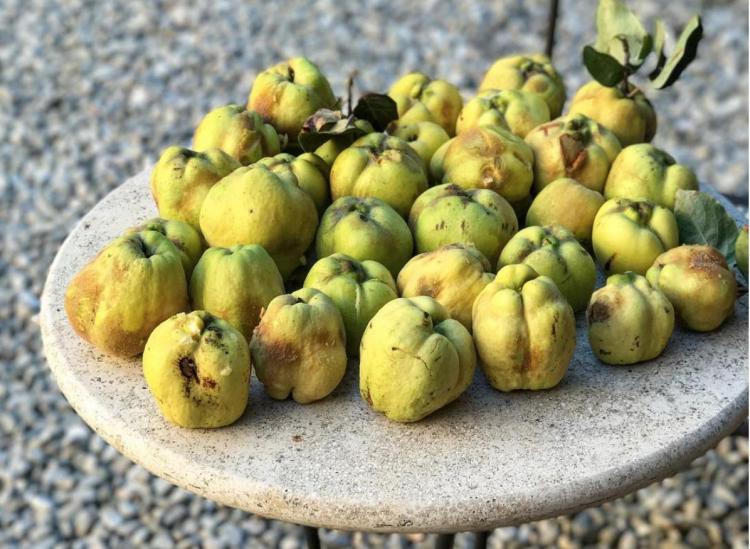Quince Is The Secret Fall Fruit You Need To Get Your Hands On

Fall is the perfect time to experiment with new fruits and vegetables, so the next time you’re walking past a farmers market, a specialty grocery store or the produce section of Whole Foods, keep an eye our for quince, especially between October and early January.
The knobby-looking fall fruit has a rich golden yellow exterior, and it’s basically a hybrid of an apple and a pear. The outside can either be smooth or covered with a grey fuzz. The fragrance is strong with hints of vanilla, citrus and apple. Quince is hard, acidic and a little bitter before cooking, but after you stew it in sugar and water or a little bit of wine, it turns a pinkish color and the bitterness turns into a sweet, delicate flavor.
Quince is believed to predate the apple, which is pretty hard to do. Greek mythology associates the golden fruit with Aphrodite, the goddess of love. It’s been said that in Medieval times, quince was spiced with ginger, cloves, pepper, cinnamon and nutmeg. Today, this apple-pear hybrid is popular in subtropical climates like certain parts of Mexico and Latin America.
One of the best ways to turn this fibrous fruit into a sweet snack is to poach it. Poached quince are tender, fragrant and rose-colored. The flesh of quince is full of pectin, which can be used to make all kinds of jelly, jams and marmalades. Here’s a recipe for a quince orange marmalade that’s perfect for spreading on your morning toast.
You could also go the roasting route and make maple-roasted quince with sweet potatoes. For the ultimate fall dish, try spiced apple cider soup with sweet potato dumplings, quince and dates. Maybe even whip up some quince butter and add it to a cheese plate or a cake recipe. Bottom line: once you start cooking quince, there are no limits to what you can do with it.
If you spot the fall fruit, scoop it up and bring it on home because you’ve struck fruity gold.











